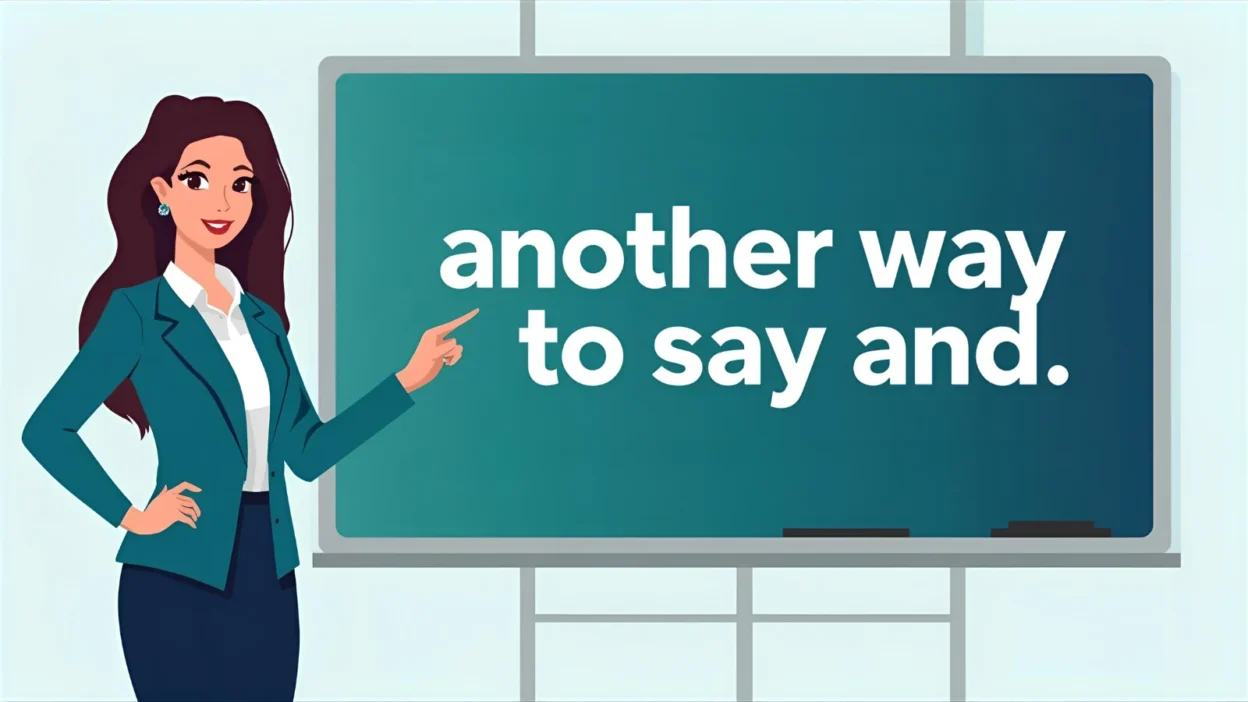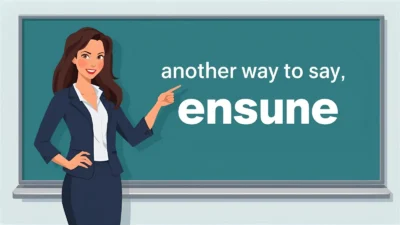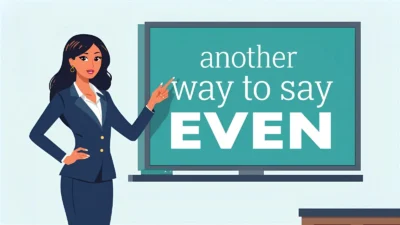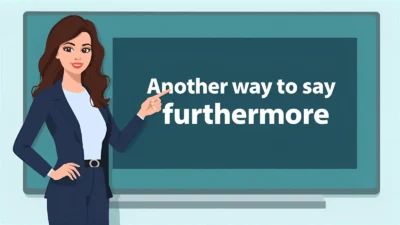The word “and” is one of the most frequently used conjunctions in English. It connects words, phrases, and clauses, helping ideas flow smoothly. However, in writing—especially professional, academic, or creative contexts—overusing “and” can make your sentences feel repetitive or monotonous.
Fortunately, there are numerous alternatives that convey addition, continuation, or connection while enhancing variety and tone. Below are 37 refined alternatives to “and”, complete with their meanings, explanations, examples, best uses, and tones.
1. As Well As
Meaning: In addition to something.
Detailed Explanation: Adds an extra point or element, often emphasizing inclusivity.
Scenario Example: She’s skilled in graphic design as well as photography.
Best Use: Professional writing, resumes, reports.
Tone: Formal, polished, balanced.
2. Plus
Meaning: Adds another item or idea.
Detailed Explanation: A casual connector that can replace “and” in conversational or semi-formal writing.
Scenario Example: The new model is faster, plus it’s more energy-efficient.
Best Use: Emails, casual writing, marketing content.
Tone: Friendly, upbeat, informal.
3. Along With
Meaning: Together with something else.
Detailed Explanation: Suggests companionship or combination.
Scenario Example: The report was submitted along with the financial statement.
Best Use: Business reports, formal writing.
Tone: Neutral, professional, cohesive.
4. Together With
Meaning: Combined or included alongside something else.
Detailed Explanation: Indicates connection or cooperation.
Scenario Example: The CEO, together with the board, approved the proposal.
Best Use: Professional or academic writing.
Tone: Formal, respectful, precise.
5. In Addition To
Meaning: Adds a supplementary idea or detail.
Detailed Explanation: Emphasizes extra information without sounding repetitive.
Scenario Example: In addition to English, she speaks fluent Spanish.
Best Use: Essays, reports, formal communication.
Tone: Formal, informative, composed.
6. Also
Meaning: Introduces another point or piece of information.
Detailed Explanation: Commonly used to link related thoughts smoothly.
Scenario Example: He’s creative and also highly analytical.
Best Use: Essays, articles, casual or formal writing.
Tone: Neutral, adaptable, clear.
7. Moreover
Meaning: Adds a reinforcing or more significant point.
Detailed Explanation: Used to strengthen an argument or emphasize importance.
Scenario Example: The plan is cost-effective; moreover, it’s environmentally sustainable.
Best Use: Academic, persuasive, or professional writing.
Tone: Formal, assertive, structured.
8. Furthermore
Meaning: Provides an additional supportive statement.
Detailed Explanation: Similar to “moreover” but slightly more formal and sequential.
Scenario Example: The proposal is feasible; furthermore, it aligns with our company’s goals.
Best Use: Research papers, reports, essays.
Tone: Highly formal, academic, polished.
9. In Conjunction With
Meaning: In combination or partnership with something.
Detailed Explanation: Highlights cooperation or coordination.
Scenario Example: The project was developed in conjunction with local authorities.
Best Use: Academic and business writing.
Tone: Formal, collaborative, professional.
10. Coupled With
Meaning: Combined or joined together with.
Detailed Explanation: Suggests that one factor complements or enhances another.
Scenario Example: High demand, coupled with limited supply, raised prices.
Best Use: Analytical, technical, or economic writing.
Tone: Formal, intellectual, analytical.
11. As Well
Meaning: Indicates an additional or similar point.
Detailed Explanation: Works well at the end of a sentence to avoid redundancy.
Scenario Example: She joined the meeting, and her assistant attended as well.
Best Use: Conversational or semi-formal writing.
Tone: Natural, friendly, fluid.
12. Not to Mention
Meaning: Adds emphasis to something noteworthy or additional.
Detailed Explanation: Introduces an extra detail for reinforcement.
Scenario Example: The trip was fun, not to mention educational.
Best Use: Informal writing, speeches, marketing.
Tone: Conversational, expressive, persuasive.
13. Plus the Fact That
Meaning: Emphasizes an additional key detail.
Detailed Explanation: Provides expansion and adds weight to an argument.
Scenario Example: Plus the fact that the data supports our hypothesis.
Best Use: Conversations, persuasive writing.
Tone: Informal, assertive, engaging.
14. On Top Of That
Meaning: Adds another significant point or reason.
Detailed Explanation: Indicates accumulation or emphasis.
Scenario Example: The weather was bad, and on top of that, the flight was delayed.
Best Use: Conversations, informal reports, storytelling.
Tone: Casual, expressive, emphatic.
15. What’s More
Meaning: Highlights an additional idea or advantage.
Detailed Explanation: Useful for persuasive or promotional contexts.
Scenario Example: What’s more, our new app saves both time and money.
Best Use: Marketing, presentations, blogs.
Tone: Friendly, confident, persuasive.
16. In Combination With
Meaning: Used when two or more elements work together.
Detailed Explanation: Highlights joint function or effect.
Scenario Example: Exercise in combination with proper nutrition improves health.
Best Use: Scientific, technical, or academic writing.
Tone: Formal, precise, factual.
17. As Accompanied By
Meaning: Together with or supported by.
Detailed Explanation: Implies something occurs alongside another factor.
Scenario Example: The statement was released as accompanied by official documents.
Best Use: Legal or professional documents.
Tone: Formal, factual, objective.
18. In Tandem With
Meaning: Occurring together or in harmony.
Detailed Explanation: Suggests two things working simultaneously.
Scenario Example: Marketing works in tandem with customer feedback.
Best Use: Business or research contexts.
Tone: Professional, collaborative, elegant.
19. Likewise
Meaning: In the same way or similarly.
Detailed Explanation: Adds agreement or continuation to a prior point.
Scenario Example: The first test was successful; likewise, the second showed strong results.
Best Use: Essays, comparisons, analyses.
Tone: Formal, cohesive, polished.
20. Plus Also
Meaning: Adds emphasis to an additional point.
Detailed Explanation: Slightly redundant in strict writing but effective in casual speech.
Scenario Example: It’s affordable, plus also very durable.
Best Use: Informal conversation, friendly writing.
Tone: Casual, lively, enthusiastic.
21. As an Added Bonus
Meaning: Introduces an extra advantage or perk.
Detailed Explanation: Often used to highlight a benefit.
Scenario Example: As an added bonus, the software includes lifetime updates.
Best Use: Marketing, advertising, emails.
Tone: Positive, friendly, persuasive.
22. Alongside
Meaning: Next to or together with something else.
Detailed Explanation: Commonly used to indicate collaboration or partnership.
Scenario Example: She worked alongside industry experts to complete the project.
Best Use: Professional, academic, collaborative writing.
Tone: Formal, neutral, cooperative.
23. As Part Of
Meaning: Indicates inclusion within a group or system.
Detailed Explanation: Highlights contribution or membership.
Scenario Example: He was selected as part of the innovation team.
Best Use: Reports, biographies, formal writing.
Tone: Neutral, respectful, formal.
24. Plus This/That
Meaning: Adds another example or emphasis.
Detailed Explanation: Keeps sentences dynamic and conversational.
Scenario Example: The team exceeded targets—plus that new client was a huge win.
Best Use: Casual writing, dialogue, emails.
Tone: Conversational, light, modern.
25. And What’s More
Meaning: Introduces a point that strengthens the previous one.
Detailed Explanation: Often used rhetorically to build momentum.
Scenario Example: The results were impressive—and what’s more, they exceeded expectations.
Best Use: Presentations, persuasive writing.
Tone: Confident, expressive, enthusiastic.
Conclusion
While “and” is simple and effective, replacing it with varied connectors enhances readability, tone, and sophistication. Use formal alternatives like “in addition to,” “along with,” “furthermore,” in professional contexts, and casual ones like “plus,” “what’s more,” “on top of that” in friendly or conversational writing.
Choosing the right substitute keeps your writing fluid, engaging, and appropriately styled for every situation.



